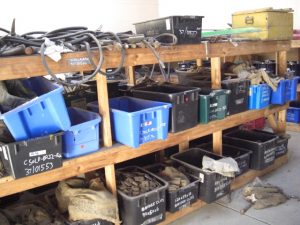Subject Area: spare parts management mistakes
 Spare parts management is a crucial aspect of any organization that relies on machinery or equipment to operate.
Spare parts management is a crucial aspect of any organization that relies on machinery or equipment to operate.
However, many organizations make mistakes when managing their spare parts inventory, which lead to increased costs, reduced efficiency, and even unnecessary downtime.
In this article, I discuss the top 5 mistakes companies make with spare parts inventory management and how to avoid them.
One of the most common mistakes companies make with spare parts inventory management is a lack of training.
Many organizations assume that spare parts are like all other inventory types (spoiler alert: they aren’t) and that anyone can manage them (they can’t).
Effective spare parts inventory management requires specialized knowledge and skills, including an understanding of spare parts’ unique inventory dynamics.
Without proper training, companies make mistakes that lead to excess inventory, increased costs, and reduced operational efficiency.
Another common mistake companies make with spare parts inventory management is failing to have a plan to improve.
Despite very few companies being happy with their spare parts inventory outcomes, many do not make plans for improvement.
In my experience, this is a result of mistake #1. Without the right training they can’t conceive of a different (and better) way to manage the inventory. The result is that they are stuck with the same poor outcomes, overspending and under servicing.
Spare parts inventory management is an ongoing process that requires continuous improvement to ensure optimal performance. Without a plan to improve, companies miss opportunities to reduce costs, improve efficiency, and increase uptime.
Setting targets is an essential part of effective spare parts inventory management.
Targets help companies measure performance, identify areas for improvement, and track progress over time.
However, many organizations fail to set targets for their spare parts inventory management processes.
Without targets, both spare parts managers and the end users (maintenance) who rely on the spare parts supply, may not have a clear understanding of how they are each performing, which can lead to frustration, inefficiencies, and increased costs.
Spare parts inventory management doesn’t need to be a complex process, yet many organizations make the mistake of overcomplicating things.
This can lead to confusion, inefficiencies, and increased costs.
To avoid this mistake, spare parts managers should focus on simplifying their processes and using tools and technologies that are easy to use and understand.
Effective communication is critical to successful spare parts inventory management.
This is because effective management requires the input of different disciplines within the company – maintenance, planning, procurement, storeroom management, and finance.
However, in many organizations these functions operate in a kind of isolation (silo mentality) and the opportunity to share information and know-how is lost.
This leads to information gaps, data discrepancies and poor decision making.
To avoid this mistake, companies need to build in cooperation and collaboration to ensure that there is transparent communication between each functional group.
In conclusion, spare parts inventory management is a critical aspect of any organization that relies on machinery or equipment to operate.
However, many organizations make simple spare parts management mistakes, which can lead to increased costs, reduced efficiency, and even downtime.
To avoid these mistakes, spare parts managers should focus on training, continuous improvement, setting targets, simplifying processes, and effective communication. By doing so, they can ensure that their spare parts inventory management processes are set up for optimal performance and efficiency.
It is precisely because the issues are many and the nuances subtle that here at SparePartsKnowHow.com we have developed as a platform to access a wide range of resources relating to spare parts inventory management and optimization.
Posted by Phillip Slater